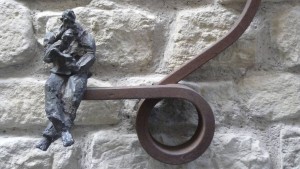As a teacher I believe learning should be an enjoyable and interactive activity; I distinguish learning as an experience in and of itself. For the teaching process to be successful, it must be student centred. The first step in achieving a student-centred environment in my class is to make students feel comfortable enough to express themselves while at the same time relating to the course material. It is of invaluable importance to be familiar with the students themselves—their name, program, and art interests—as this will foster a strong interpersonal relationship between educator and student. Also essential is the implementation of learning tips that afford the students the tools necessary to succeed in the classroom. To approach a question or a project, I teach students to think gradually; as they should analyze artworks in all kind of expressions from a general standpoint and then move on to the more specific philosophical point of view. I help them to critically examine values, goals, and ideals, they learn to sympathize and empathize with others of different backgrounds.

The assessment of the culture, art, design, and architecture material is made possible through the use of visual aids such as Keynote presentations and films that are essential in any of my classes. This combined with topic-specific readings and extracurricular activities, such as museum and sacred places visits, which allow students to interact phenomenologically with works of art, are key elements to a successful and meaningful learning experience. Methodologically, I prefer the chronological approach to teaching art, philosophy and architecture and apply the traditional compare-and-contrast technique in which students are encouraged to think critically about a pair of images. The student-centred learning environment is furthered through the combination of the lecture format with intervals of discussion and group presentations.
I motivate students by sharing my enthusiasm and love of philosophy, art, architecture and religious studies. My aim is to get students to at least be aware what I study, and if they learn to be keen on it, that is even better. My teaching philosophy simply stated is enthusiasm, commitment, and passion.
Teachers in the Faculty of Liberal Arts have the broad responsibility of serving as guide and mentor on an intellectual journey, opening and broadening curious minds by exposing them to new thoughts and ideas. We teach because we serve as the door between students and the unique world of art and design, I find it is my responsibility to provide students with the best possible view into that multicultural world, to empathize with others of different background, and most importantly to help them enter it well prepared.